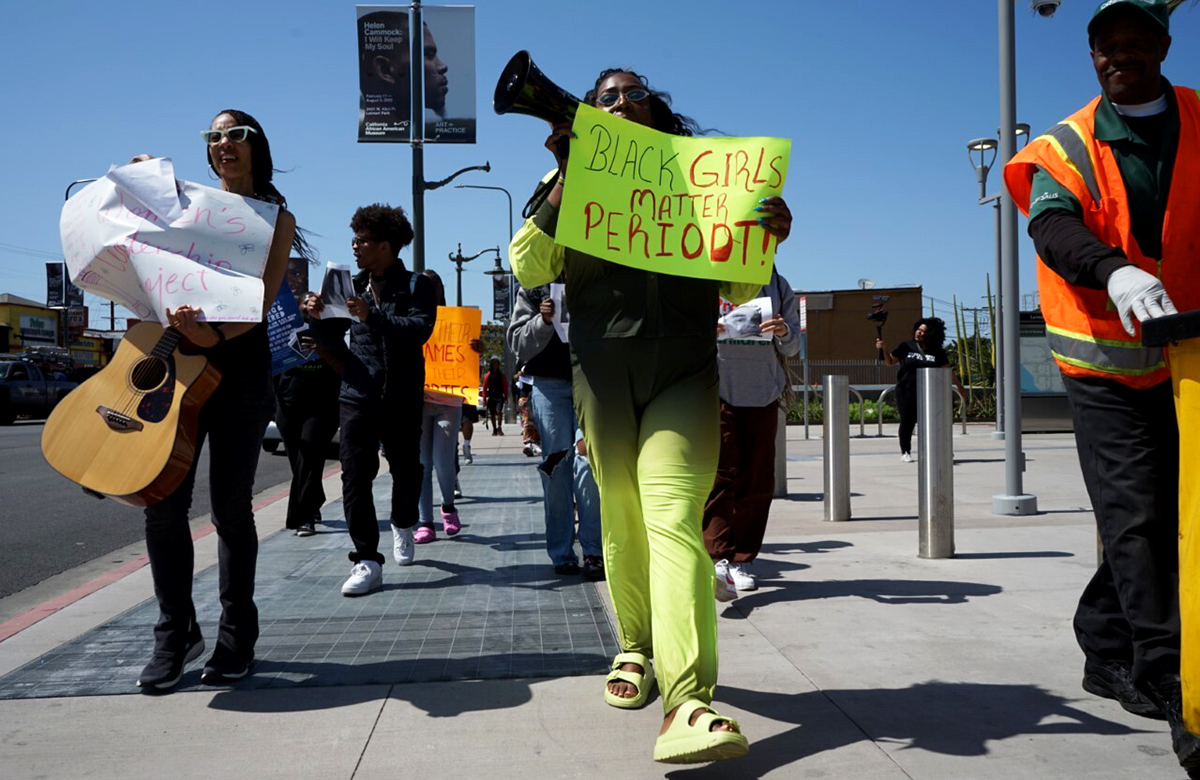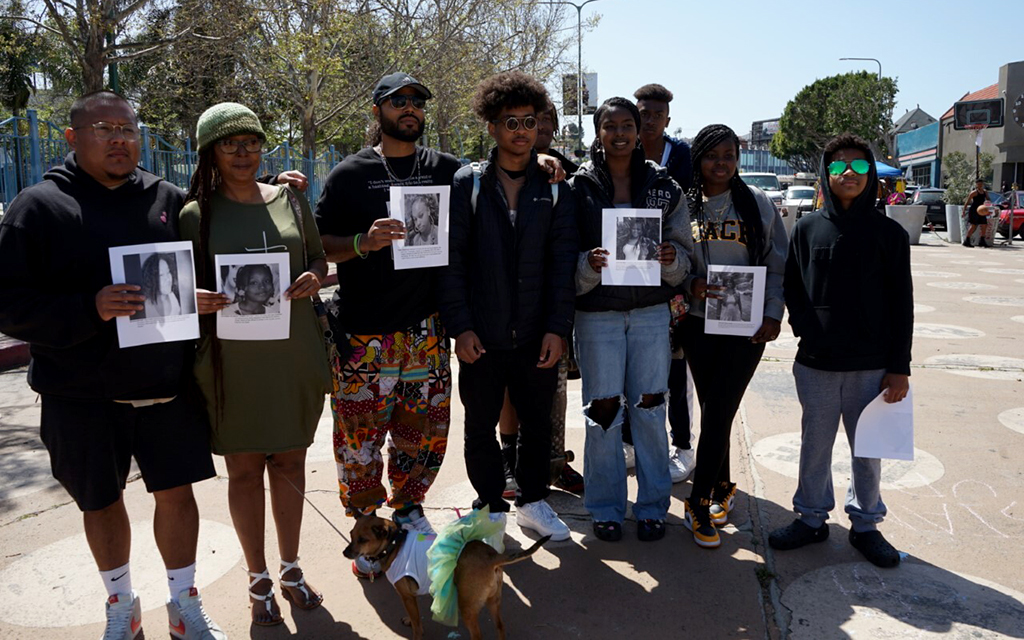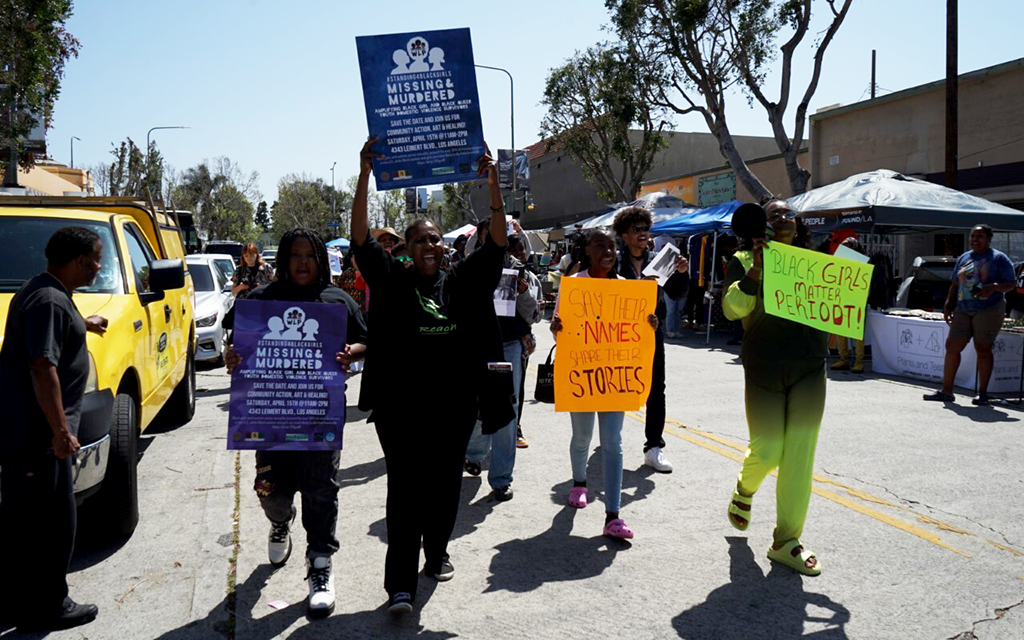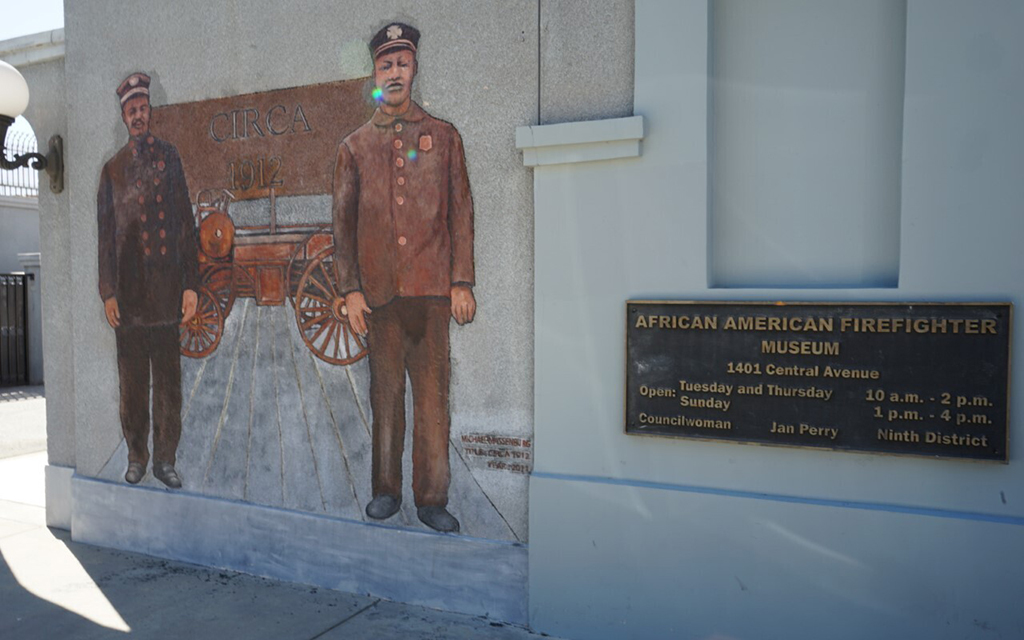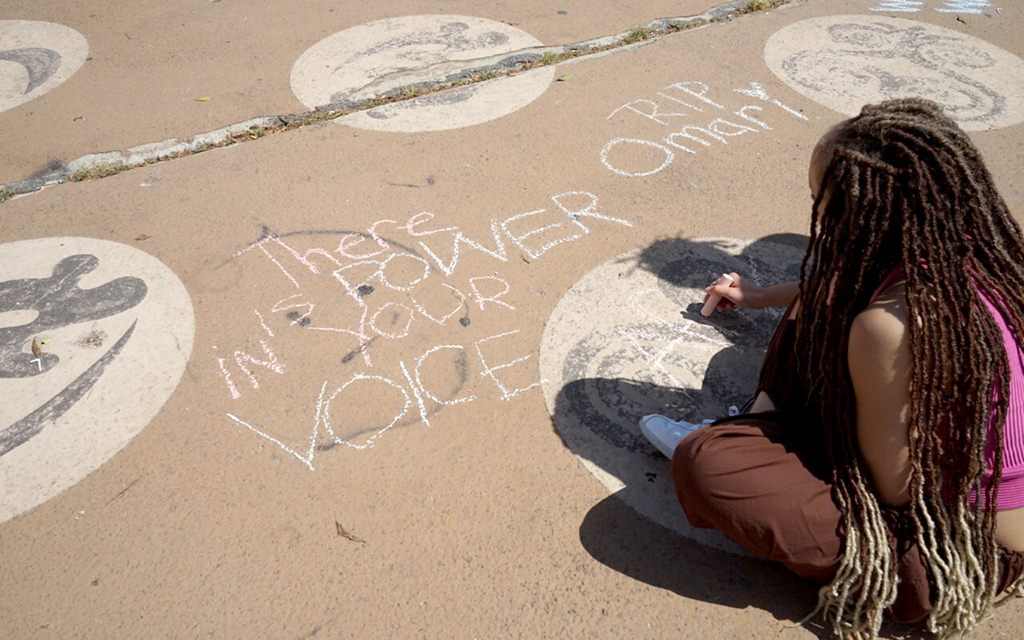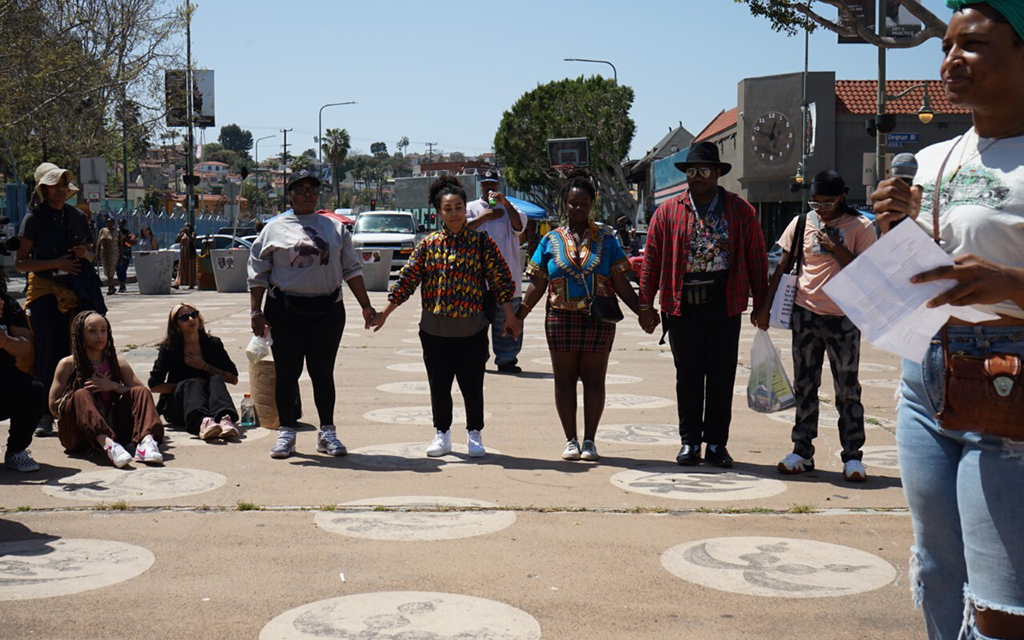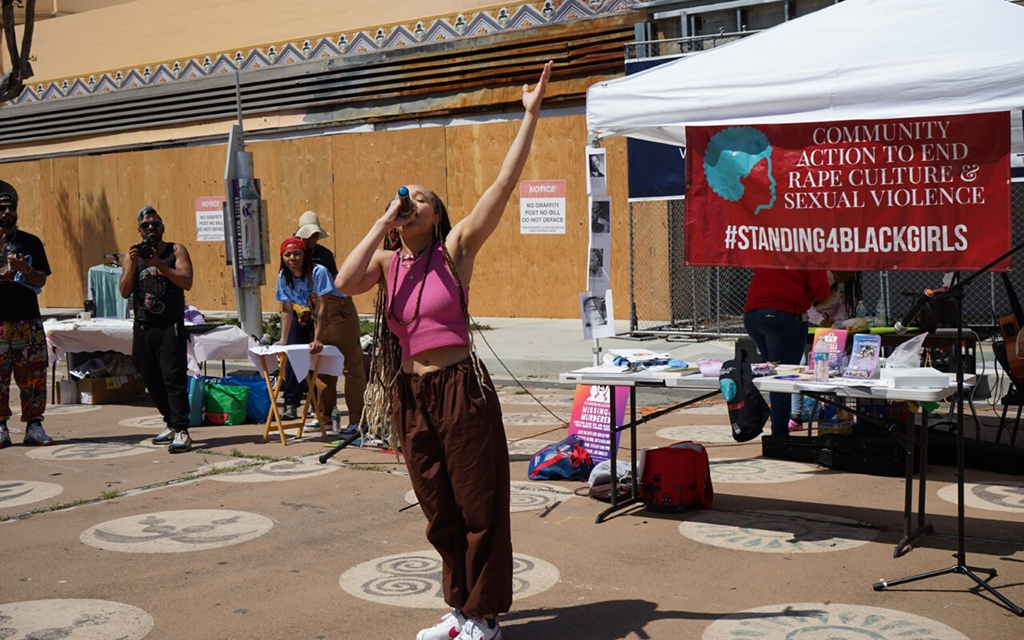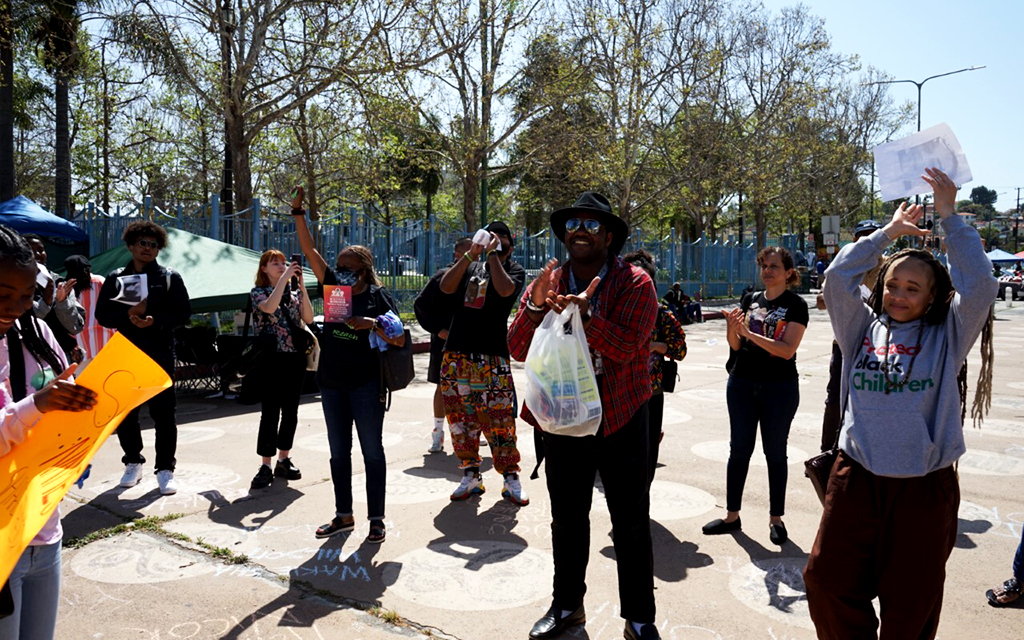Hutchinson said the group started the hashtag #Standing4BlackGirls on Instagram at the height of the pandemic to address the fact that there are many Black girls who couldn’t find affordable health care.
It isn’t just murders or disappearances that are of concern. From 2003 to 2019, the rates of suicide among Black girls, 12 to 14 years old, increased by 49%, Hutchinson said.
Despite the grim statistics, the event sought to bring people together through music and art.
A singer and songwriter, Honey Bluu, performed while Nina Rose, a woman who helps others deal with the deaths of loved ones, (she refers to herself as a “death doula”) created a grieving circle. Participants formed a circle, held hands, were told to focus on their breathing and were asked to remember those who have died.
Rose passed around chalk and asked people to write whatever came to mind to honor the Black girls and women who have disappeared or died. One wrote, “There is power in your voice.” Several wrote #Matrice or other references to a promising young woman, Mitrice Richardson, who is among the many who died too young and whose deaths remain unsolved.
Richardson was a 24-year-old college graduate who went missing on Sept. 17, 2009. She had been arrested after experiencing a mental health crisis – acting erratically in a restaurant – and had been taken to the Los Angeles County Sheriff’s Malibu/Lost Hills station in Agoura, California.
Richardson was missing for 11 months before being found dead by park rangers in August 2010. Her murder has never been solved.
Ronda Hampton, a psychologist, said that she first heard the term “missing white woman syndrome” during the search for Richardson.
The late PBS news anchor Gwen Ifill coined the term in a speech to point out the mainstream media’s fascination with covering missing or endangered white women, and its seeming disinterest in cases involving missing people of color.
A recent example was the disappearance of vagabond blogger Gabby Petito in 2021, a white woman who was subsequently found murdered. While the Petito case received blanket news coverage, relatives of Black missing persons around the country asked why their loved ones haven’t received the same attention.
Hampton said Richardson’s story opened her eyes to the other missing Black women out there whose stories were overlooked by the media.
Now she uses her time to bring justice and attention to the violence Black girls face.
